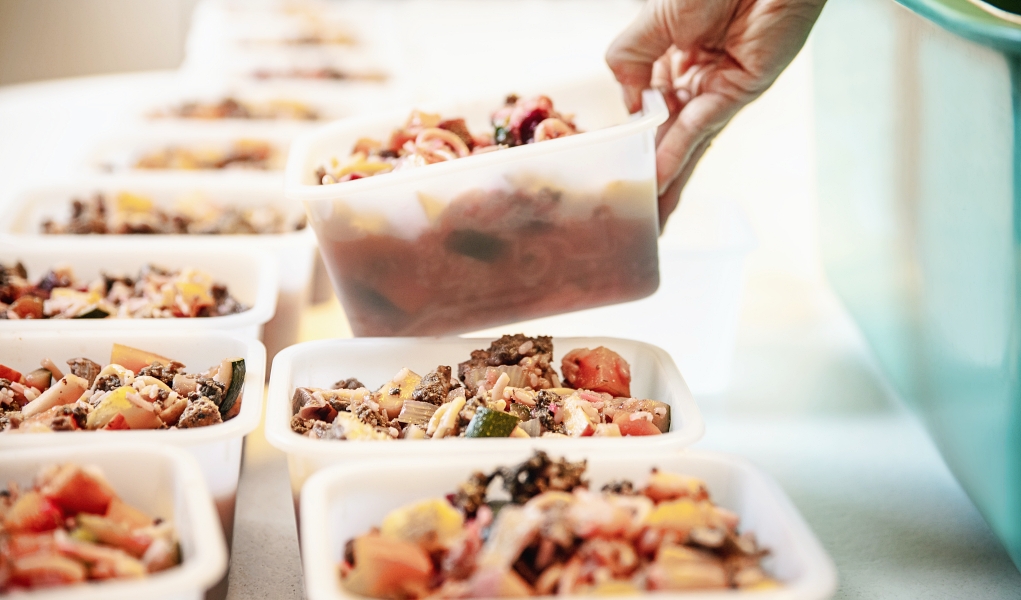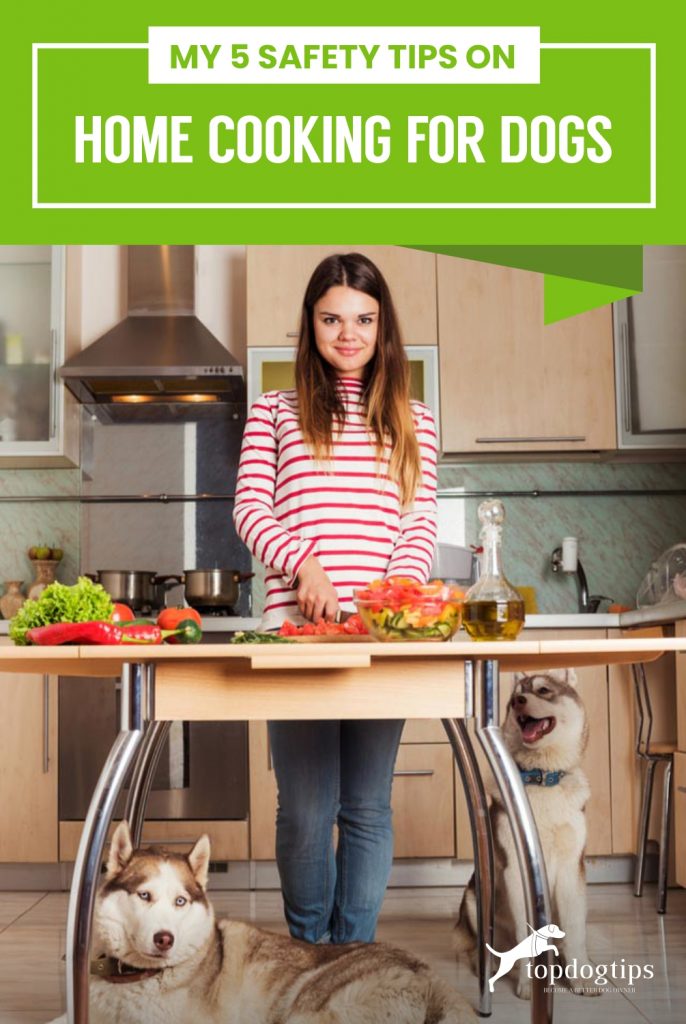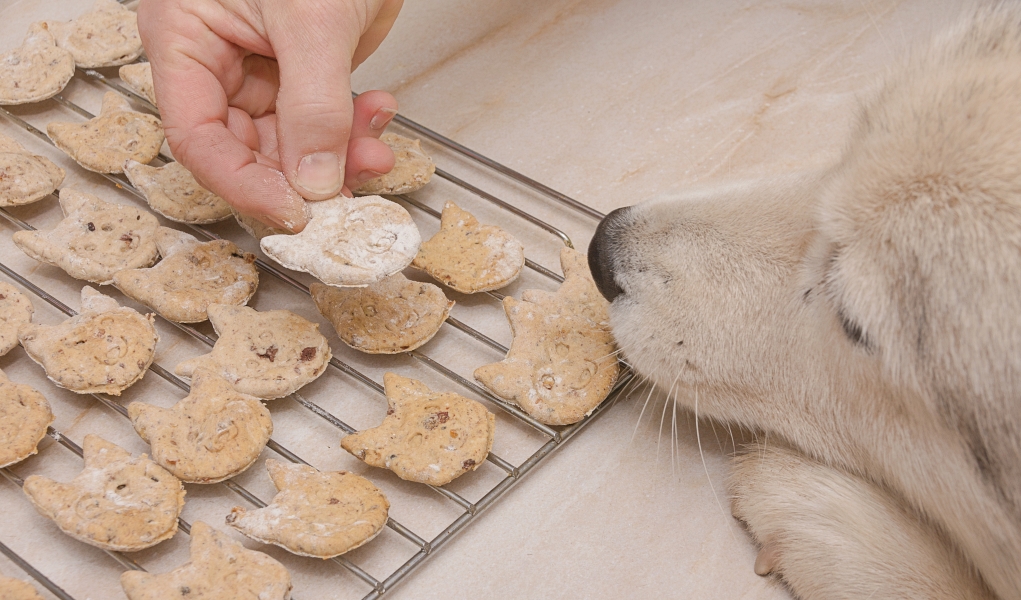The advantages to homemade dog food are numerous, but the dangers can be just as many. The biggest benefit to store bought kibble is that it provides balanced nutrition with all of the vitamins and minerals that your dog needs. You don't get that luxury with homemade meals, but following my safety tips on home cooking for dogs will help to ensure that you're providing the best nutrition for your pet.
I hear so many pet parents say that they feed their dog the same food that they feed their human family members. If they're having steak, potatoes and carrots, they feed their dog steak, potatoes and carrots. While all of those ingredients are safe and healthy for dogs, they won't provide balanced nutrition.
DO NOT take making your dogs' meals lightly. Home cooking for dogs is something that takes a lot of research and education. Feeding your dog an unbalanced diet for just a couple of weeks could result in malnutrition and cause health problems that could last a lifetime.
My 5 Safety Tips on Home Cooking for Dogs
 1. Make it nutritionally balanced
1. Make it nutritionally balanced
While it may not be the tastiest option, store-bought dog food is usually balanced in a way that meets the dietary requirements of a healthy dog. If you decide to make homemade meals for your pup, you need to ensure that offers that same nutritional balance.
In general, your dog's meals should be made up of:
- about 40% protein
- about 10% carbohydrates
- about %50 fruits and vegetables
Fats should be present, but in small amounts. Fatty acids and calcium are also important nutrients that may need to be added to homemade meals in the form of supplements. Your veterinarian or a canine nutritionist will be able to evaluate the recipes that you choose and help you select the right supplements to make them nutritionally balanced for your dog's unique needs.
2. Consult a professional
It's absolutely imperative that you consult an expert before switching your dog to a homemade diet. First, they will evaluate your dog and his medical history. Then, they will help you create recipes that will meet all of his nutritional needs.
Like humans, dogs are all different. Each dog has their own unique nutritional needs based on factors such as:
- age
- weight
- activity level
- breed
- health condition
You would need to do extensive research and learn about the specific nutritional needs of canines in order to make these choices yourself. Every dog has unique needs when it comes to how much protein, carbohydrates, fat, vitamins and minerals their body will need in a day.
It's also important to remember that your dog's nutritional needs will change over time. For example, a puppy will have different nutritional needs than an adult dog. If your dog is diagnosed with a health condition, like arthritis or a heart condition, his nutritional needs will change.
For these reasons, it's crucial that you work with a canine nutrition expert to create the recipes that you feed your pooch. You can get ideas from recipes that you find online, but an expert will likely recommend that you substitute certain ingredients or add supplements to make the meal nutritionally balanced.
MORE: How To Substitute Ingredients In Homemade Dog Food Recipes
3. Know which ingredients are safe
Just because a food is healthy for the human members of your family, doesn't mean that it will be safe for your dog. There are a number of foods that are perfectly safe for human consumption, that can make your dog sick.
When thinking of safety tips on home cooking for dogs, most people know they need to stay away from chocolate, coffee, sugar and other well-known dangerous ingredients. But, did you know that onions, grapes, raisins and bread dough could also make your dog extremely sick?
Milk and other dairy products, macadamia nuts, salt and garlic can also be dangerous for your pup to consume. Before you start cooking for your dog or even just giving him scraps from your table, make sure you educate yourself on the full list of foods that are toxic for dogs.
4. Add variety
Would you like to eat the same meal for breakfast, lunch and dinner every day for weeks at a time? Of course not! So, what makes you think that your pets would enjoy this mealtime monotony?
When working with an expert to create recipes for your pooch, make sure you have a repertoire of at least a dozen meals. You can prepare multiple meals and serve different foods daily or just switch things up every couple of days. Trust me, your dog will be a lot happier with some variety in his diet.
5. Educate yourself on safe food practices
Foodborne illnesses are just as serious for dogs as they are for people. You need to practice safe food handling procedures when making meals for your pet. This includes storing food appropriately, washing your hands and disinfecting work surfaces.
It's also important that you heat food to the proper temperature to ensure that any bacteria is killed. If you choose the raw food diet, you'll need to educate yourself on proper raw food preparation to reduce the risk of your dog contracting a foodborne illness.
READ NEXT: 13 Great Books for Homemade Dog Food Beginners














